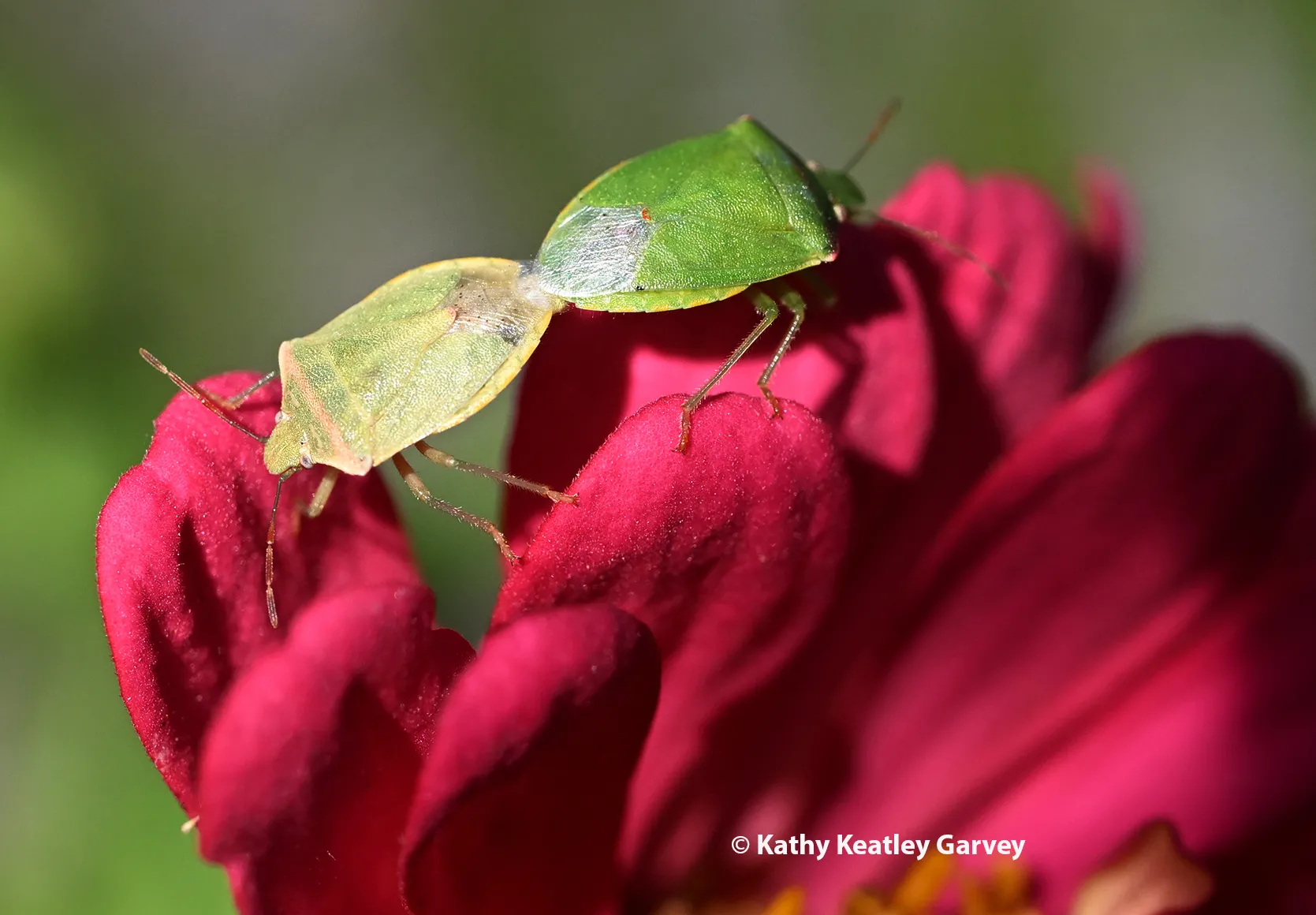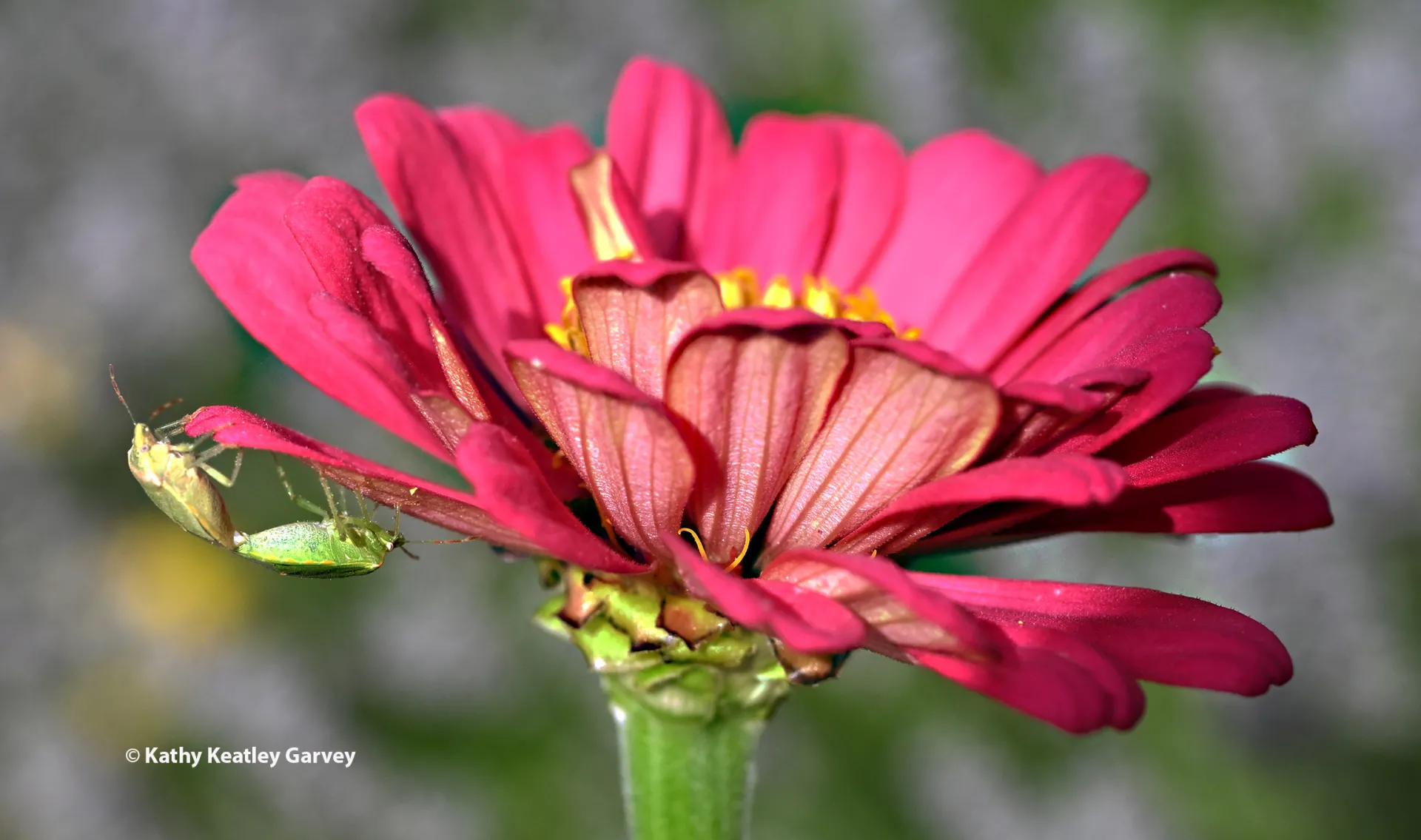Stink Bugs Suck

It seems like a good day to post images of stink bugs..
We spotted a pair of stink bugs on our zinnias "keeping busy" today.
They suck. Truly.
Stink bugs are shield-shaped sucking insects, family Pentatomidae, and California is home to more than 50 stink bug species. How did they get their name? When disturbed, they excrete a foul smell that yells “Leave me alone or you’ll be sorry.”
The UC Statewide Integrated Pest Management Program (UC IPM) describes some stink bugs as beneficial insects, that is, they prey on pest insects. The pests include Perillus and Podisus species, "such as spined soldier bug (Podisus maculiventris) and twospotted stink bug (Perillus bioculatus). Most stink bugs are plant feeders and most any plant can at least occasionally be fed upon by these sporadic pests."
“Adult stink bugs," UC IPM relates, "are distinguished from other insects by the large triangle shape with a rounded rear end (scutellum) that occurs on top of the back, covering the rear of the thorax and front portion of the abdomen. In comparison with most insects, adults are wider relative to their length."
They feed on a variety of fruits and vegetables, including pears, peaches, strawberries, apples and tomatoes. "Their feeding causes blemishes, dark pinpricks, and other discoloration on fruit and fleshy vegetables," UC IPM points out. "Damaged tissues become pithy and white and remain firm instead of developing their normal color and tasty texture. Where stink bugs earlier fed, fruit can become distorted as it grows."
Ever seen their barrel-shaped eggs, laid in clusters? When first laid, they are typically white to pale green, but may darken over time or even appear pale yellow or pinkish.
"The hatching nymphs are nearly round and their coloration may or may not resemble that of adults of the species," UC IPM says. "Nymph coloration and markings commonly vary among instars. Coloration of adults and nymphs varies by the species from a mix of bright or contrasting colors (e.g., black and orange) to a relatively uniform color, such as mostly brown, gray, or green.”
The stink bugs on our zinnias "kept busy" for several hours and didn't seem bothered by the array of pollinators buzzing or fluttering in...the honey bees, the sweat bees, the Gulf Fritillaries and a skipper butterfly.
Not much privacy for the honeymooners.
Still, a good day to post images of stink bugs.

